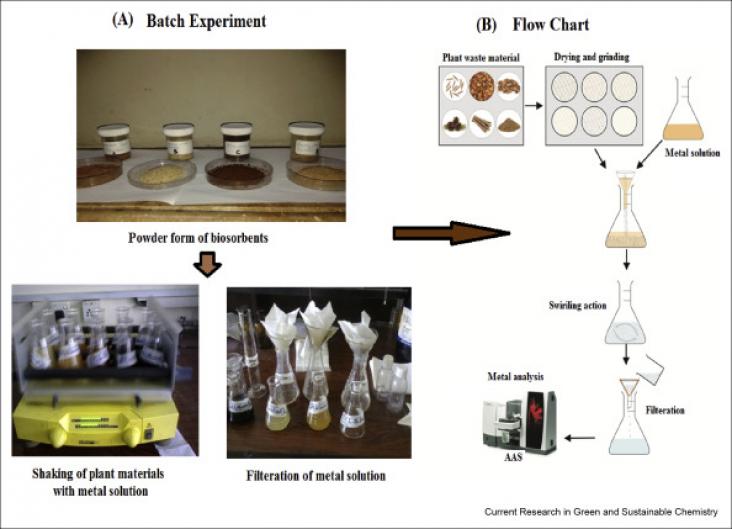
This research explores the use of indigenous waste plant materials for an easy and cost-effective approach for the removal of heavy metals from water.
The empirical analysis shows that unregulated water vending makes households without connection to pay higher tariffs for water. The paper among others recommends that tariffs at which vendors should sell water to customers should be set and closely monitored in order to ensure that households without connections have access to water at reasonable tariffs.
Multidisciplinary analytical techniques allow us to examine the presence and behaviour of pollutants in complex atmospheric, terrestrial, aquatic, and living compartments of ecosystems. This book chapter advances SDGs 6, 13 and 15.
This book chapter advances SDG 3 and 6 by describing properties of water and importance of water to biomaterials and biology.
This chapter advances SDG 6, 11, and 13 by explaining how droughts have long played a major disruptive role in history, threatening the stability of human society. Here, we briefly review the relationship between civilizations and drought, stressing the link between agriculture and drought impacts.

The SDG Impact of COVID-19 podcast series gathers expert opinion exploring the impact of COVID-19 on the Sustainable Development Goals. In this segment, we get the view of Virginia Gardiner, Founder and CEO of Loowatt.
This chapter advances SDG 6 and 11 by exploring the technological landscape of water purification in India, focusing on strategies for treatment of wastewater as a potential water source.
This chapter advances SDG 6 and 11 by reporting on the various laws and policy governing water supply in South Africa as well as the current state of water and wastewater infrastructure in South Africa.
Elsevier,
Water Conservation and Wastewater Treatment in BRICS Nations, Technologies, Challenges, Strategies and Policies, 2020, Pages 321-328
Considering the significance of the indigenous knowledge systems toward addressing key environmental concerns, in this chapter, an attempt has been undertaken to address the indigenous knowledge system for water conservation and management.
This book chapter addresses goals 14, 13 and 6 by looking at the ecology and species conservation of freshwater habitats.
